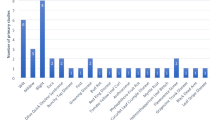Abstract
Accurate and timely detection of diseases present in citrus crops is a crucial task for effective crop management and the prevention of yield loss. Traditional methods of disease detection, such as visual inspection, can be time-consuming and prone to human error. In this paper, we propose a novel approach for automatic and accurate disease detection using convolutional neural networks (CNNs). By investigating the numerous images of infected citrus fruits and leaves, the proposed CNN model has attained prominent recognition and classification accuracy results. The proposed Enhanced-CNN (E-CNN) model is trained using diverse collection of three benchmark datasets such as A Citrus Fruits and Leaves Dataset, Citrus Pest and Disease dataset and Citrus Leaf dataset. Due to careful investigation on layer details and image pre-processing techniques, the proposed E-CNN model secures remarkable performance in citrus fruit and leaf disease detection and type classification. The proposed model achieves significant improvement in disease detection and classification performance by securing the average f1 score 92.06, precision score 95.14, recall score 96.67, recognition accuracy 98% and classification accuracy 99%. These results are comparatively higher than earlier approaches and show more than 6% improvements in disease detection and classification performance. We believe that this unique approach has the potential to significantly improve disease management practices in the citrus industry, helping to improve crop yield and reduce the spread of diseases.




Similar content being viewed by others
Data availability
The data that support the findings of this study are available on request from the corresponding author.
References
Senthilkumar C, Kamarasan M (2019) Optimal Segmentation with Back-Propagation Neural Network (BPNN) Based Citrus Leaf Disease Diagnosis. 2019 International Conference on Smart Systems and Inventive Technology (ICSSIT) pp 78–82. https://doi.org/10.1109/icssit46314.2019.8987749
Dang-Ngoc H, Cao TNM, Dang-Nguyen C (2021) Citrus leaf disease detection and classification using hierarchical support vector machine. 2021 International Symposium on Electrical and Electronics Engineering (ISEE) pp 69–74. https://doi.org/10.1109/isee51682.2021.9418680
Khotsathian S, Lamjiak T, Donnua S, Polvichai J (2022) Convolution neural networks backbone model for citrus leaf disease detection. 2022 19th International Joint Conference on Computer Science and Software Engineering (JCSSE) pp 1–5. https://doi.org/10.1109/jcsse54890.2022.9836298
Goyal N, Kumar S, Saraswat M (2022) Detection of Unhealthy citrus leaves using Machine Learning Technique. 2022 12th International Conference on Cloud Computing, Data Science & Engineering (Confluence) pp 591–595. https://doi.org/10.1109/confluence52989.2022.9734162
Ramadhan MI, Suyanto S (2021) Detection of disease in citrus plants through leaf images using a convolutional neural network. 2021 3rd International Conference on Electronics Representation and Algorithm (ICERA) pp 71–76. https://doi.org/10.1109/icera53111.2021.9538757
Muthu Brindha G, Karishma KK, Nivetha J, Vidhya B (2022) Automatic detection of citrus fruit diseases using mib classifier. 2022 3rd International Conference on Electronics and Sustainable Communication Systems (ICESC) pp 1111–1116. https://doi.org/10.1109/icesc54411.2022.9885702
Laosim S, Samanchuen T (2021) Classification of pomelo leaf diseases using convolution neural network. 2021 18th International Conference on Electrical Engineering/Electronics, Computer, Telecommunications and Information Technology (ECTI-CON) pp 577–580. https://doi.org/10.1109/ecti-con51831.2021.9454782
Sudharshan Duth, P., & Bhat, S. G. (2022). Disease Classification in Citrus Leaf using Deep Learning. 2022 IEEE International Conference on Data Science and Information System (ICDSIS) pp 1–5. https://doi.org/10.1109/icdsis55133.2022.9915847
Pramanik A, Zabed Khan A, Biswas AA, Rahman M (2021) Lemon leaf disease classification using cnn-based architectures with transfer learning. 2021 12th International Conference on Computing Communication and Networking Technologies (ICCCNT) pp 1–6. https://doi.org/10.1109/icccnt51525.2021.9579586
Sunny S, Indra Gandhi MP (2022) Identification and classification of leaf diseases using modified contrast limited ahe and extreme learning machine. 2022 International Conference on Inventive Computation Technologies (ICICT) pp 1257–1262. https://doi.org/10.1109/icict54344.2022.9850756
Khattak A et al (2021) Automatic detection of citrus fruit and leaves diseases using deep neural network model. IEEE Access 9:112942–112954
Hassam M et al (2022) A single stream modified MobileNet V2 and whale-controlled entropy based optimization framework for citrus fruit diseases recognition. IEEE Access 10:91828–91839
Abinash MJ (2022) Identification and diagnosis of breast cancer using a composite machine learning techniques. J Pharm Negat Results 13:78–85
Bhuvaneswari R, Vaidyanathan SG (2021) Transgender face recognition using ROI based Convolutional Neural Network. Int J Comput Appl 183(8):1–4
Ramadhan A, Palupi I, Wahyudi BA (2022) Candlestick patterns recognition using CNN-LSTM Model to Predict Financial Trading Position in Stock Market. J Comput Syst Inf 3(4):339–347
Laosim S, Samanchuen T (2021) Classification of pomelo leaf diseases using convolution neural network. 2021 18th International Conference on Electrical Engineering/Electronics, Computer, Telecommunications and Information Technology (ECTI-CON). IEEE
Khattak A, Khan A (2022) Cross-location activity recognition using adversarial learning. The 11th International Symposium on Information and Communication Technology
Author information
Authors and Affiliations
Contributions
Dr. Rajveer Shastri, Abhay Chaturvedi, B Mouleswararao, Conceptualization, methodology, formal analysis, writing—original draft, writing—review and editing, project administration.
Dr. S. Varalakshmi, Dr. G.N.R. Prasad, Mylavarapu Kalyan Ram: writing—original draft, writing—review and editing, project administration. Methodology, investigation, data curation, visualization, Dr. Rajveer Shastri: Supervision, writing—review and editing.
Corresponding author
Ethics declarations
Human and animal rights
This research does not involve any human participants and/or animals; hence, any informed consent or statement on the welfare of animals does not apply to this research.
Conflict of interest
The authors declare no competing interests.
Additional information
Publisher's note
Springer Nature remains neutral with regard to jurisdictional claims in published maps and institutional affiliations.
Rights and permissions
Springer Nature or its licensor (e.g. a society or other partner) holds exclusive rights to this article under a publishing agreement with the author(s) or other rightsholder(s); author self-archiving of the accepted manuscript version of this article is solely governed by the terms of such publishing agreement and applicable law.
About this article
Cite this article
Shastri, R., Chaturvedi, A., Mouleswararao, B. et al. An Automatic Detection of Citrus Fruits and Leaves Diseases Using Enhanced Convolutional Neural Network. Remote Sens Earth Syst Sci 6, 123–134 (2023). https://doi.org/10.1007/s41976-023-00086-9
Received:
Revised:
Accepted:
Published:
Issue Date:
DOI: https://doi.org/10.1007/s41976-023-00086-9




